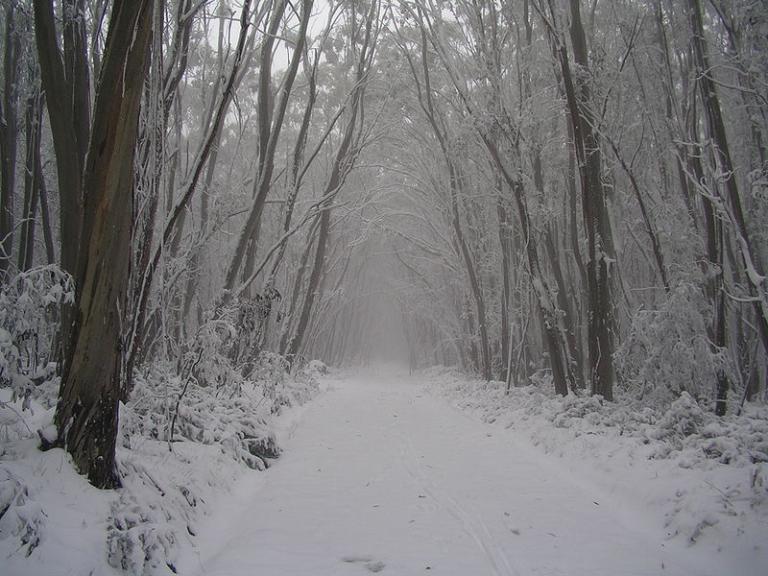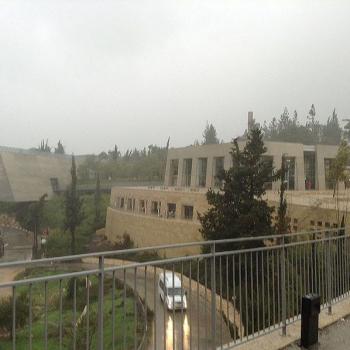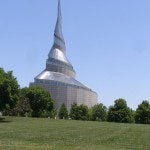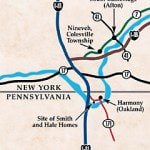
This wretched essay by the infamous Daniel Peterson went up earlier today in Interpreter: A Journal of Latter-day Saint Faith and Scholarship:
“Vast Prairies and Trackless Wilds of Snow: A Good Test of Sincerity”
Abstract: Embarking roughly six months after the organization of The Church of Jesus Christ of Latter-day Saints, the 1830–1831 “mission to the Lamanites” faced challenges that we pampered moderns can scarcely imagine. Oliver Cowdery, Peter Whitmer Jr., Parley P. Pratt, Ziba Peterson, and, eventually, Frederick G. Williams demonstrated beyond reasonable dispute the depth of their commitment to the Restoration and to the promises extended by the Book of Mormon to the surviving children of Lehi. Given that Cowdery and Whitmer were witnesses of the golden plates, this demonstration of their genuine belief seems significant.
***
And don’t forget the online conference on the Book of Moses that begins this evening at 7:00 PM. It is co-sponsored by the Interpreter Foundation, Brigham Young University’s Department of Ancient Scripture,
Book of Mormon Central, and FAIR. Here’s the program:
“Tracing Ancient Threads in the Book of Moses: 2021 Program and Abstracts”
***
And here are some additional new items that have appeared on the website of the Interpreter Foundation yesterday and today:
““The Book That Answers All the Questions”: Hugh Nibley and the Pearl of Great Price”
Interpreter Radio Show — April 4, 2021
The discussants for the 4 April 2021 broadcast of the Interpreter Radio Show were Neal Rappleye, Jasmin Rappleye, and Hales Swift. In this installment, which has now been archived and made accessible (stripped of commercial and other interruptions) for your listening pleasure and edification, they recapped the recent General Conference. The second portion of the show was dedicated to a scripture roundtable discussing the upcoming Come Follow Me lesson #20 (D&C 49-50). The Interpreter Radio Show can be heard Sunday evenings from 7 to 9 PM (MDT), on K-TALK, AM 1640, or you can listen live on the Internet at ktalkmedia.com.
This is an Interpreter Radio Roundtable for Come, Follow Me Doctrine and Covenants Lesson 18, “The Promises … Shall Be Fulfilled” on D&C 45. The panelists for this roundtable were Bruce Webster, Kris Frederickson and Mike Parker. This roundtable was extracted from the March 21, 2021 broadcast of Interpreter Radio. The complete show may be heard at https://interpreterfoundation.org/interpreter-radio-show-march-21-2021/. The Interpreter Radio Show can be heard Sunday evenings from 7 to 9 PM (MDT), on K-TALK, AM 1640, or you can listen live on the Internet at ktalkmedia.com.
From Jonn Claybaugh: Come, Follow Me — D&C Study and Teaching Helps: Lesson 18, April 26-May 2: D&C 45 — “The Promises … Shall Be Fulfilled”
***
Finally, here are a few links from a previous issue of Interpreter. I share them with you in case you missed them or have forgotten about them:
S. Kent Brown, “Nice Try, But No Cigar: A Response to Three Patheos Posts on Nahom (1 Nephi 16:34)”
Abstract: A series of three Patheos posts on the subject of Nahom rings out-of-tune bells all over the place.
Jeff Lindsay, “Joseph and the Amazing Technicolor Dream Map: Part 1 of 2”
Abstract: The Arabian Peninsula has provided a significant body of evidence related to the plausibility of Nephi’s account of the ancient journey made by Lehi’s family across Arabia. Relatively few critics have seriously considered the evidence, generally nitpicking at details and insisting that the evidences are insignificant. Recently more meaningful responses have been offered by well educated writers showing familiarity with the Arabian evidences and the Book of Mormon. They argue that Nephi’s account is not historical and any apparent evidence in its favor can be attributed to weak LDS apologetics coupled with Joseph’s use of modern sources such as a detailed map of Arabia that could provide the name Nahom, for example. Further, the entire body of Arabian evidence for the Book of Mormon is said to be irrelevant because Nephi’s subtle and pervasive incorporation of Exodus themes in his account proves the Book of Mormon is fiction. On this point we are to trust modern Bible scholarship (“Higher Criticism”) which allegedly shows that the book of Exodus wasn’t written until long after Nephi’s day and, in fact, tells a story that is mere pious fiction, fabricated during or after the Exile.
There were high-end European maps in Joseph’s day that did show a place name related to Nahom. Efforts to locate these maps anywhere near Joseph Smith have thus far proved unsuccessful. But the greater failure is in the explanatory power of any theory that posits Joseph used such a map. Such theories do not account for the vast majority of impressive evidences for the plausibility of Nephi’s account of the journey through Arabia (e.g., remarkable candidates for Bountiful and the River Laman, the plausibility of the eastward turn after Nahom). They do not explain why one obscure name among hundreds was plagiarized — a name that would have the good fortune of later being verified as a genuine ancient tribal name present in the right region in Lehi’s day. More importantly, theories of fabrication [Page 154]based on modern maps ignore the fact that Joseph and his peers never took advantage of the impressive Book of Mormon evidence that was waiting to be discovered on such maps. That discovery would not come until 1978, and it has led to many remarkable finds through modern field work since then. Through ever better maps, exploration, archaeological work, and other scholarly work, our knowledge of the Arabian Peninsula has grown dramatically from Joseph’s day. Through all of this, not one detail in the account of Lehi’s Trail has been invalidated, though questions remain and much further work needs to be done. Importantly, aspects that were long ridiculed have become evidences for the Book of Mormon. There is a trend here that demands respect, and no mere map from Joseph’s day or even ours can account for this.
As for the Exodus-based attack, yes, many modern scholars deny that the Exodus ever happened and believe the story was fabricated as pious fiction well after 600 bc. But this conclusion does not represent a true consensus and is not free from bias and blindness. The Exodus-based attack on the Book of Mormon ultimately is a case where a weakness in biblical evidence from Egypt is used to challenge the strength of Book of Mormon evidence from Egypt’s neighbor to the east, the Arabian Peninsula. We will see that there are good reasons for the absence of evidence from Egypt, and yet abundant evidence that the Exodus material interwoven in Nephi’s account could have been found on the brass plates by 600 bc. The absence of archaeological evidence for Israel’s exodus from Egypt and the chaos in the many schools of modern biblical scholarship do not trump hard archaeological, geographical, and other evidence from the Arabian Peninsula regarding Lehi’s exodus.
We will see that some of the most significant strengths of the Book of Mormon have not been turned into weaknesses. Indeed, the evidence from Arabia continues to grow and demands consideration from those willing to maintain an open mind and exercise a particle of faith.
Stephen O. Smoot, “Mormonism at Oxford and What It Signifies”
Review of Terryl Givens and Philip L. Barlow. The Oxford Handbook of Mormonism (New York: Oxford University Press, 2015). 647 pp. + index. $150.00
Abstract: The Oxford Handbook of Mormonism is a welcomed addition to the current scholarly discussion surrounding the history, theology, and culture of The Church of Jesus Christ of Latter-day Saints. It should be read and studied by all interested students of Mormonism and signals that the scriptures, theology, and history of the Latter-day Saints are all increasingly being taken seriously in mainstream academia.
Jeff Lindsay, “Joseph and the Amazing Technicolor Dream Map: Part 2 of 2”
Abstract: The Arabian Peninsula has provided a significant body of evidence related to the plausibility of Nephi’s account of the ancient journey made by Lehi’s family across Arabia. Relatively few critics have seriously considered the evidence, generally nitpicking at details and insisting that the evidences are insignificant. Recently more meaningful responses have been offered by well educated writers showing familiarity with the Arabian evidences and the Book of Mormon. They argue that Nephi’s account is not historical and any apparent evidence in its favor can be attributed to weak LDS apologetics coupled with Joseph’s use of modern sources such as a detailed map of Arabia that could provide the name Nahom, for example. Further, the entire body of Arabian evidence for the Book of Mormon is said to be irrelevant because Nephi’s subtle and pervasive incorporation of Exodus themes in his account proves the Book of Mormon is fiction. On this point we are to trust modern Bible scholarship (“Higher Criticism”) which allegedly shows that the book of Exodus wasn’t written until long after Nephi’s day and, in fact, tells a story that is mere pious fiction, fabricated during or after the Exile.
There were high-end European maps in Joseph’s day that did show a place name related to Nahom. Efforts to locate these maps anywhere near Joseph Smith have thus far proved unsuccessful. But the greater failure is in the explanatory power of any theory that posits Joseph used such a map. Such theories do not account for the vast majority of impressive evidences for the plausibility of Nephi’s account of the journey through Arabia (e.g., remarkable candidates for Bountiful and the River Laman, the plausibility of the eastward turn after Nahom). They do not explain why one obscure name among hundreds was plagiarized — a name that would have the good fortune of later being verified as a genuine ancient tribal name present in the right region in Lehi’s day. More importantly, theories of fabrication [Page 248]based on modern maps ignore the fact that Joseph and his peers never took advantage of the impressive Book of Mormon evidence that was waiting to be discovered on such maps. That discovery would not come until 1978, and it has led to many remarkable finds through modern field work since then. Through ever better maps, exploration, archaeological work, and other scholarly work, our knowledge of the Arabian Peninsula has grown dramatically from Joseph’s day. Through all of this, not one detail in the account of Lehi’s Trail has been invalidated, though questions remain and much further work needs to be done. Importantly, aspects that were long ridiculed have become evidences for the Book of Mormon. There is a trend here that demands respect, and no mere map from Joseph’s day or even ours can account for this.
As for the Exodus-based attack, yes, many modern scholars deny that the Exodus ever happened and believe the story was fabricated as pious fiction well after 600 bc. But this conclusion does not represent a true consensus and is not free from bias and blindness. The Exodus-based attack on the Book of Mormon ultimately is a case where a weakness in biblical evidence from Egypt is used to challenge the strength of Book of Mormon evidence from Egypt’s neighbor to the east, the Arabian Peninsula. We will see that there are good reasons for the absence of evidence from Egypt, and yet abundant evidence that the Exodus material interwoven in Nephi’s account could have been found on the brass plates by 600 bc. The absence of archaeological evidence for Israel’s exodus from Egypt and the chaos in the many schools of modern biblical scholarship do not trump hard archaeological, geographical, and other evidence from the Arabian Peninsula regarding Lehi’s exodus.
We will see that some of the most significant strengths of the Book of Mormon have not been turned into weaknesses. Indeed, the evidence from Arabia continues to grow and demands consideration from those willing to maintain an open mind and exercise a particle of faith.
Abstract: The prominence of circles and circular motion has been one present in scientific discussion of the structure of the universe from Aristotle to Einstein. Development through Ptolemy, Copernicus and Kepler created elliptical variations, but in essence, the scientific community has been unable to break free of a certain degree of circular motion that ultimately seems fundamental to the very nature of the universe. Just as the circle featured prominently in Aristotle’s cosmology, it remains an integral aspect of reality, though perhaps it is more difficult to pick out in its present forms as planetary ellipses and curved space-time. In this paper I analyze the intellectual tradition surrounding the circle as a reflection of God’s eternal nature as discussed in Doctrine and Covenants 3:2. Essentially, I argue that the traditional Mormon conception of “one eternal round” is evidence of the eternal and divine nature of circles, which, the tradition indicates, is an inescapable feature of physical reality, and indicative of God and his purposes.












